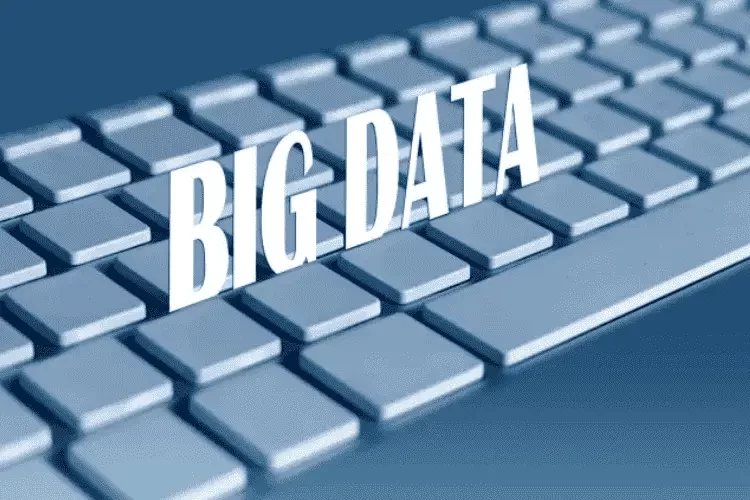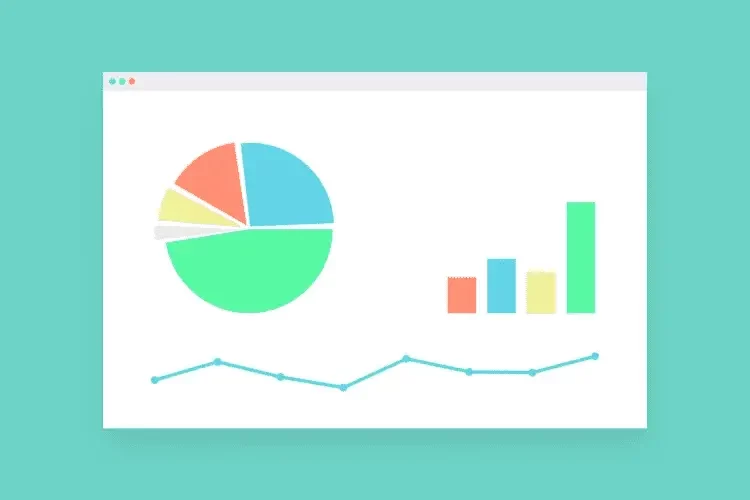With new evolving technologies, new trends, and new advancements come the emergence of two concepts: big data and data science.
However, the buzz of big data and data science has diffused confusion regarding their distinctions. They seem pretty similar, don’t they? It’s a given knowing how the two are related to data.
In today’s detailed post, we’re going to equip you with key differences between the two concepts that will help you better understand these terms if you are an aspiring data scientist or data analyst.
Big data is defined as large sets of heterogeneous information that grow exponentially. The diverse and complex nature of this data makes it either challenging or impracticable to handle and analyze with traditional systems.
But where is this data coming from?
Big data encompasses structured, unstructured, and semi-structured data. It is categorized into the three V’s to help understand big data’s characteristics.

Firstly, the volume of data determines whether or not a given data set is considered Big Data. In the modern world, businesses get data from a wide range of sources, including purchases, websites, social media, videos, images, and more.
Another important facet of big data is its variety. We mentioned how big data is bifurcated as structured, unstructured, and semi-structured, which is why it needs specific pre-processing abilities and specialized algorithms.
The speed at which data is produced in real-time is referred to as velocity. Since high-velocity data is produced at such a fast rate, distributed processing techniques are needed.
The rapid stream of data makes it difficult for traditional methods to handle. Therefore, to derive insights from this would need to analyze the information in real time.
The vast volume of data obtained from social media, phones, apps, online shopping, and surveys has contributed to the rise of an accelerating industry – data science.
The increasing number of big data sets has prompted the need to analyze and uncover insights from them to make predictions and future decisions.
These actionable insights are extracted using Statistics, Analytics, Programming, Artificial Intelligence, and Machine and Deep Learning.
Moreover, data scientists follow a systematic approach where they perform data mining of raw big data and then investigate it. From this process, they can interpret and identify trends and patterns.

We can summarise this process into four areas:
Overall, monitoring this data helps organizations discover unseen patterns that guide them to make data-driven and strategic decisions.
Now that we’ve covered the basics of big data and data science, it’s time to take a look at the differences between the two.
We’ve divided this portion into 6 key areas ranging from its Meaning to Tools to understand how it is applied.
| Basis | Big Data | Data Science |
| Meaning | It refers to massive amounts of data that typical data analysis methods cannot manage. | It deals with gathering, handling, analysing, and putting data to use in a variety of tasks. |
| Concept | Volume, variety, and velocity are the four V’s that make up big data. It is made up of various types of continuously produced data. |
Data science involves using scientific techniques to extract and interpret the generated data. |
| Purpose | Organizations employ big data to increase productivity and customer satisfaction. Also, it has more to do with processing a large amount of data. |
Data science is focused on developing modeling approaches and extracting valuable insights from data. It essentially employs methodologies to assess the potential of big data. |
| Application | Healthcare Research and Development Finance and Banking Travel E-commerce Cyber Security |
Artificial Intelligence (AI) Fraud Detection Machine Learning Deep Learning Natural Language Processing Weather Prediction Digital Marketing Consumer Analysis Pharmaceuticals |
| Skills | Analytical Skills (e.g. Data Analysis) Business Skills Computer Science Innovation/ Creativity |
Data Wrangling Data Visualisation Machine Learning Deep Learning Programming Languages (e.g Python and R) Mathematics and Statistics Communication Skills Business Acumen |
| Tools | Apache Hadoop Atlas. ti HPCC Apache Storm Apache Cassandra Stats iQ Couch DB Pentaho |
Apache Spark SAS BigML D3.js MATLAB Tableau IBM SPSS Jupyter |
As we move towards making ourselves more capable of handling big data, here comes the question of the use of big data technologies for businesses.
Did you know that a study conducted by Economist Prasanna Tambe finds that using big data technologies shows a 1 to 3% higher productivity than the average firm?
In addition, investments in implementing these technologies, including Hadoop or CouchDB, along with new ones, are essential for businesses to assist in the data processing.
We’ve talked about how data science helps organizations make data-driven and strategic decisions. But what are the ways that businesses make decisions using data?
A study by Economist Erik Brynjolfsson and others shows the relationship between making data-driven decisions and a firm’s performance. In a gist, it demonstrated that the productivity of firms that adopted DDD or data-driven decisions increased by about 5 to 6% higher.
Therefore, it would be appropriate to say that the more data-driven a business is, the more effective it is.
Today, we have discussed the key differences between big data and data science. Every organization is looking for ways to use data to its competitive advantage.
Taken together, both big data and data science have ushered their way into today’s much-expected new IT world. In all, data science helps firms make data-driven decisions, but it is made possible with technologies that come along with big data.
We provide online certification in Data Science and AI, Digital Marketing, Data Analytics with a job guarantee program. For more information, contact us today!
Courses
1stepGrow
Terms
Anaconda | Jupyter Notebook | Git & GitHub (Version Control Systems) | Python Programming Language | R Programming Langauage | Linear Algebra & Statistics | ANOVA | Hypothesis Testing | Machine Learning | Data Cleaning | Data Wrangling | Feature Engineering | Exploratory Data Analytics (EDA) | ML Algorithms | Linear Regression | Logistic Regression | Decision Tree | Random Forest | Bagging & Boosting | PCA | SVM | Time Series Analysis | Natural Language Processing (NLP) | NLTK | Deep Learning | Neural Networks | Computer Vision | Reinforcement Learning | ANN | CNN | RNN | LSTM | Facebook Prophet | SQL | MongoDB | Advance Excel for Data Science | BI Tools | Tableau | Power BI | Big Data | Hadoop | Apache Spark | Azure Datalake | Cloud Deployment | AWS | GCP | AGILE & SCRUM | Data Science Capstone Projects | ML Capstone Projects | AI Capstone Projects | Domain Training | Business Analytics
WordPress | Elementor | On-Page SEO | Off-Page SEO | Technical SEO | Content SEO | SEM | PPC | Social Media Marketing | Email Marketing | Inbound Marketing | Web Analytics | Facebook Marketing | Mobile App Marketing | Content Marketing | YouTube Marketing | Google My Business (GMB) | CRM | Affiliate Marketing | Influencer Marketing | WordPress Website Development | AI in Digital Marketing | Portfolio Creation for Digital Marketing profile | Digital Marketing Capstone Projects
Jupyter Notebook | Git & GitHub | Python | Linear Algebra & Statistics | ANOVA | Hypothesis Testing | Machine Learning | Data Cleaning | Data Wrangling | Feature Engineering | Exploratory Data Analytics (EDA) | ML Algorithms | Linear Regression | Logistic Regression | Decision Tree | Random Forest | Bagging & Boosting | PCA | SVM | Time Series Analysis | Natural Language Processing (NLP) | NLTK | SQL | MongoDB | Advance Excel for Data Science | Alteryx | BI Tools | Tableau | Power BI | Big Data | Hadoop | Apache Spark | Azure Datalake | Cloud Deployment | AWS | GCP | AGILE & SCRUM | Data Analytics Capstone Projects
Bangalore:
Anjanapura | Arekere | Basavanagudi | Basaveshwara Nagar | Begur | Bellandur | Bommanahalli | Bommasandra | BTM Layout | CV Raman Nagar | Electronic City | Girinagar | Gottigere | Hebbal | Hoodi | HSR Layout | Hulimavu | Indira Nagar | Jalahalli | Jayanagar | J. P. Nagar | Kamakshipalya | Kalyan Nagar | Kammanahalli | Kengeri | Koramangala | Kothnur | Krishnarajapuram | Kumaraswamy Layout | Lingarajapuram | Mahadevapura | Mahalakshmi Layout | Malleshwaram | Marathahalli | Mathikere | Nagarbhavi | Nandini Layout | Nayandahalli | Padmanabhanagar | Peenya | Pete Area | Rajaji Nagar | Rajarajeshwari Nagar | Ramamurthy Nagar | R. T. Nagar | Sadashivanagar | Seshadripuram | Shivajinagar | Ulsoor | Uttarahalli | Varthur | Vasanth Nagar | Vidyaranyapura | Vijayanagar | White Field | Yelahanka | Yeshwanthpur
Other Top Cities:
Mumbai | Pune | Nagpur | Delhi | Gurugram | Chennai | Hyderabad | Coimbatore | Bhubaneswar | Kolkata | Indore | Jaipur and More